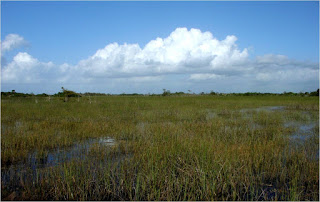To this day, I will never forget the first time I saw James Cameron’s movie, Titanic, in early January 1998. I had just started working as a naturalist guide narrating the boat tours in the Flamingo outpost in Everglades National Park, Florida. Part of my job was to be a ‘deck hand’ on the boat, assisting the captain with tying the lines, driving the boat on occasion, and participating in periodic man overboard training. With a new job requiring me to be on a boat, watching for the safety of the passengers, boat safety was certainly on my mind when I saw the movie. The soaring beautiful music of the first half of the movie when the boat was gliding across the ocean also played inside my head as our tour boats explored the waters of the Everglades.
As entertainment goes, besides the amazing musical score by James Horner, I also loved all aspects of the movie: the love story, the costumes, the way the ship was so vividly recreated, the acting by Leonardo DiCaprio, Kate Winslet, Kathy Bates, Billy Zane, etc. The movie draws you in with an enticing love story, it then kicks you in the gut with the horrific sinking. The sinking is what stayed on my mind ever since. All the innocent people who died lost their lives so tragically.
This disaster was totally a human caused disaster also. White Star Lines wanted to break speed records to cross the Atlantic. The Captain and crew ignored the iceberg radio warnings from other ships until it was too late. The propeller, rudder, and engines were insufficient to steer the boat away from the iceberg once the boat was in eminent danger of hitting the iceberg. To add insult to injury, there were only enough lifeboats to save half of the passengers on board. Somehow, White Star Lines thought their boat was “unsinkable” and just followed the British maritime regulations for the minimum number of lifeboats. Of the over 2,200 passengers on boat only about 700 people made it safely to the life boats. Most of those who deaths were caused by hypothermia of the freezing waters of the Atlantic, not by drowning.
What was striking to me then in 1998 and to this day was the hubris and arrogance of White Star Lines and the ship’s designer, Harland and Wolff. They thought they had outsmarted nature with their watertight compartments on board and other engineering advances. They then foolishly believed their innovations would enable the ship to be “unsinkable.” Well, we all know how that turned out once the ship hit that iceberg.
In January 1998, I was also deep into studying the Everglades to learn to be a naturalist to be able to explain the history of the Everglades to the passengers. I was also amazed by the 20th century human arrogance about the Everglades was a ‘useless swamp’ by Americans moving into south Florida the same time that Titanic was constructed. Floridians sincerely thought from when Florida became a state in 1845 until the 1950s that if they could just drain the Everglades they would have this world class productive farmland and urban development. However, the results were a disaster. Up until the 1950s, the Everglades was teeming with birds, fish, alligators and other wildlife that was a sight to behold. Up until the 1930s, locals talked about the skies so full of flocks of birds that it would block out the sun. The old timers from around the same time used to mention that the creeks used to be so full of fish that you could walk across them.
However, by the 1960s, scientists had noticed that upwards of 90% of the total bird and fish population was gone due to the human draining of the Everglades. The Army Corp of Engineers and the South Florida Management District dug over 1,800 canals to slice up the Everglades to drain it and provide water for the cities. As a result, there was 68 threatened or endangered species. However, the cities were actually running out of fresh water because the draining was allowing salt water from the Atlantic to creep into the underground water supply.
Just like the Titanic, the decline of the Everglades was a human caused disaster. Ever since the year 2000, the state of Florida and the federal government has attempted to spend a couple of billion dollars to ‘restore the Everglades.’
In the same year that I saw the movie Titanic, I started educating myself about global warming. Park visitors were asking me if global warming was impacting the Everglades. Park visitors expect park rangers and naturalist guides to know everything. Thus, I added global warming to my reading list to be able to answer their questions. The first book I bought in a used book store was Laboratory Earth: The Planetary Gamble We Cannot Afford to Lose by Stanford University climate scientist, Dr. Stephen Schneider. The book sounded an alarm bell that releasing so much carbon dioxide and other greenhouse gases from the massive global burning of fossil fuels is playing with the planet’s life support system. A key point that Dr. Schneider made in this 1997 book was that “the faster and harder we push on nature, the greater the chances for surprises – some of which are likely to be nasty.”
Dr. Schneider did not really go into detail of what those nasty surprises could be in that book. However, by 2006, I noticed that he was sounding an alarm bell, similar to the men on the crow’s nest observation platform on the Titanic who first saw the approaching iceberg. He states in the 2006 HBO climate change documentary, Too Hot to Handle that “It is getting warmer. The storms are getting stronger. And, the plants and animals are changing as you would expect as it is warming. It is getting hard to say that this is an accident of nature.”
From seeing the movie Titanic, learning about the human caused damage to the Everglades, and reading Dr. Schneider’s Laboratory Earth book, lots of seeds were planted in me to eventually become a climate change communicator.
In the back of my mind, I always wondered if anyone else had noticed dangerous parallels with the Titanic sinking and the modern day threat of climate change. It turned out that Titanic director James Cameron noticed the similarities. Last week, the National Geographic TV Channel aired a two hour special Titanic: The Final Word with James Cameron. In this show, Cameron, brought together a team of engineers, naval architects, artists, and historians to solve the lingering mysteries of why and how an “unsinkable” ship sank. It was a fascinating special to watch.
This is how James Cameron connected the Titanic sinking to the current threat of climate change:
Part of the Titanic parable is of arrogance, of hubris, of the sense that we’re too big to fail. Well, where have we heard that one before?
There was this big machine, this human system, that was pushing forward with so much momentum that it couldn’t turn, it couldn’t stop in time to avert a disaster. And that’s what we have right now.
Within that human system on board that ship, if you want to make it a microcosm of the world, you have different classes, you’ve got first class, second class, third class. In our world right now you’ve got developed nations, undeveloped nations.
You’ve got the starving millions who are going to be the ones most affected by the next iceberg that we hit, which is going to be climate change. We can see that iceberg ahead of us right now, but we can’t turn.
We can’t turn because of the momentum of the system, the political momentum, the business momentum. There too many people making money out of the system, the way the system works right now and those people frankly have their hands on the levers of power and aren’t ready to let ‘em go.
Until they do we will not be able to turn to miss that iceberg and we’re going to hit it, and when we hit it, the rich are still going to be able to get their access to food, to arable land, to water and so on. It’s going to be poor, it’s going to be the steerage that are going to be impacted. It’s the same with Titanic.
I think that’s why this story will always fascinate people. Because it’s a perfect little encapsulation of the world, and all social spectra, but until our lives are really put at risk, the moment of truth, we don’t know what we would do. And that’s my final word.
Just as many contributing factors caused the sinking of the Titanic, three factors in 1998 colliding to inspire me to be a climate change communicator: connecting with the Everglades as a naturalist, reading Stephen Schneider for the first time, and seeing James Cameron’s Titanic. As we reflect on the 100th anniversary of the sinking, may the Titanic also speak to you to reduce the threat of climate change.







Thanks for posting that excerpt from Cameron with some of the parallels between the Titanic disaster and climate change. I had somehow missed it earlier.
Thanks, so much Tom! I sure do appreciate this.
Hello, I just wanted to say that I really enjoyed your site and this post. You make some very informative points.Keep up the great work! Thanks…
Miami city and boat tour